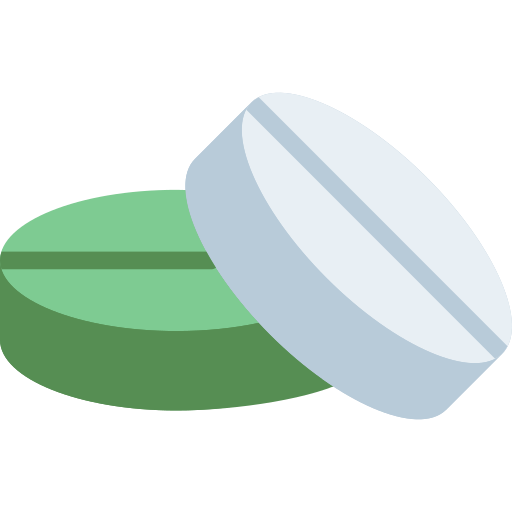
Product Details
Description
Cytochrome P450 Isozymes: Doxepin is primarily metabolized by hepatic cytochrome P450 isozymes CYP2C19 and CYP2D6, and to a lesser extent, by CYP1A2 and CYP2C9. Inhibitors of these isozymes may increase the exposure of doxepin. Doxepin is not an inhibitor of any CYP isozymes at therapeutically relevant concentrations. The ability of Doxepin to induce CYP isozymes is not known. Cimetidine: Doxepin exposure is doubled with concomitant administration of cimetidine, a nonspecific inhibitor of CYP isozymes. A maximum dose of 3 mg is recommended in adults and elderly when cimetidine is co administered with Doxepin. Alcohol: When taken with Doxepin, the sedative effects of alcohol may be potentiated. CNS Depressants and Sedating Antihistamines: When taken with Doxepin, the sedative effects of sedating antihistamines and CNS depressants may be potentiated. Tolazamide: A case of severe hypoglycemia has been reported in a type II diabetic patient maintained on tolazamide (1 g/day) 11 days after the addition of oral doxepin (75 mg/day).
The following serious adverse reactions are as follows: Abnormal thinking and behavioral changes Suicide risk and worsening of depression CNS Depressant effects
Pregnancy Category C. There are no adequate and well-controlled studies of Doxepin in pregnant women. Doxepin should be used during pregnancy only if the potential benefit justifies the potential risk to the fetus. Administration of doxepin to pregnant animals resulted in adverse effects on offspring development at doses greater than the maximum recommended human dose (MRHD) of 6 mg/day. Doxepin is excreted in human milk after oral administration. There has been a report of apnea and drowsiness occurring in a nursing infant whose mother was taking the higher dose of doxepin used to treat depression. Caution should be exercised when Doxepin is administered to nursing women.
Need to Evaluate for Comorbid Diagnoses: Because sleep disturbances may be the presenting manifestation of a physical and/or psychiatric disorder, symptomatic treatment of insomnia should be initiated only after careful evaluation of the patient. The failure of insomnia to remit after 7 to 10 days of treatment may indicate the presence of a primary psychiatric and/or medical illness that should be evaluated. Exacerbation of insomnia or the emergence of new cognitive or behavioral abnormalities may be the consequence of an unrecognized psychiatric or physical disorder. Such findings have emerged during the course of treatment with hypnotic drugs. Abnormal Thinking and Behavioral Changes: Complex behaviors such as “sleep-driving” (i.e., driving while not fully awake after ingestion of a hypnotic, with amnesia for the event) have been reported with hypnotics. These events can occur in hypnotic-naive as well as in hypnotic-experienced persons. Although behaviors such as "sleep-driving" may occur with hypnotics alone at therapeutic doses, the use of alcohol and other CNS depressants with hypnotics appears to increase the risk of such behaviors, as does the use of hypnotics at doses exceeding the maximum recommended dose. Due to the risk to the patient and the community, discontinuation of Doxepin should be strongly considered for patients who report a "sleep-driving" episode. Other complex behaviors (e.g., preparing and eating food, making phone calls, or having sex) have been reported in patients who are not fully awake after taking a hypnotic. As with "sleep-driving", patients usually do not remember these events. Amnesia, anxiety and other neuro-psychiatric symptoms may occur unpredictably. Suicide Risk and Worsening of Depression: In primarily depressed patients, worsening of depression, including suicidal thoughts and actions (including completed suicides), has been reported in association with the use of hypnotics. Doxepin, the active ingredient in Doxepin, is an antidepressant at doses 10- to 100-fold higher than in Doxepin. Antidepressants increased the risk compared to placebo of suicidal thinking and behavior (suicidality) in children, adolescents, and young adults in short-term studies of major depressive disorder (MDD) and other psychiatric disorders. Risk from the lower dose of doxepin in Doxepin can not be excluded. It can rarely be determined with certainty whether a particular instance of the abnormal behaviors listed above is drug induced, spontaneous in origin, or a result of an underlying psychiatric or physical disorder. Nonetheless, the emergence of any new behavioral sign or symptom of concern requires careful and immediate evaluation.
Tricyclic & related anti-depressant drugs
Keep below 30°C temperature, away from light & moisture. Keep out of the reach of children.
-
Support 24/7
Call us anytime -
100% Safety
Only secure payments